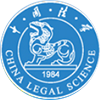摘要(Abstract):
锚定效应是司法认知偏差的一种重要表现形式,受此影响法官会在量化决策时给予初始信息过多的重视,将某些随机的锚位值作为估测的起始值,导致裁判结果很不稳定,严重损害司法形象。利用广东省2015年四种代表性损害赔偿案件的统计数据,对司法情境因素、精神损害赔偿和裁判锚定效应的关系进行了实证检验。研究发现,锚定效应的确是中国民事司法实践中一种非常普遍的现象,当前裁判锚定效应的发生呈现出内外有别的总体格局,影响显著的外生锚点和作用微弱的内生锚点形成强烈反差,反映出当代中国法官的尴尬处境。法官群体对外界压力和风险的系统性回应是诱发裁判锚定效应的关键因素。未来的司法体制建设应将有限的资源投入到对外生锚点的控制上,并建立有效的法官决策信息供给机制。
关键词(KeyWords): 司法认知偏差;量化裁判;锚定效应;精神损害赔偿;抚偿比
Abstract:
Keywords:
基金项目(Foundation): 中国法学会部级法学研究课题“损害赔偿诉讼中的司法认知与策略行为研究”(项目批准号:CLS[2016]D03)的阶段性研究成果
作者(Author): 杨彪;
Email:
参考文献(References):
- (1)按照现代认知心理学的观点,锚定效应作为一种典型的由启发式判断机制引起的认知偏差,描述的是这样一种心理状态:在毫无头绪的情况下,人们倾向于把对将来的估计和已采用过的估计联系起来,同时易受他人建议的影响。当人们对某件事的性质和数量做估测的时候,其实并不存在绝对意义上的好与坏、高与低,一切都是相对的,关键看如何定位基点。基点定位就像一只沉锚,确定了锚位,就确定了评价体系和标准,好坏与高低也就评定出来了。
- (2)参见最高人民法院院长周强在第十二届全国人民代表大会第四次会议上关于最高人民法院工作的报告(2016年3月13日)。
- (3)包括旨在减少精神损害赔偿裁判随意性的《关于确定民事侵权精神损害赔偿责任若干问题的解释》(2001年)、以明确人身损害赔偿数额计算标准为主要目标的《关于审理人身损害赔偿案件适用法律若干问题的解释》(2003年)、以规范惩罚性损害赔偿判决为目标的《关于审理商品房买卖合同纠纷案件适用法律若干问题的解释》第8、9、11条(2003年)、以规范违约金调整为目标的《关于适用〈中华人民共和国合同法〉若干问题的解释(二)》第29条(2009年)、以量刑规范化为目标的《人民法院量刑指导意见(试行)》(2010年)、以约束法官自由裁量权为目标的《关于案例指导工作的规定》(2010年),等等。
- (4)See Valerie P.Hans&Valerie F.Reyna,To Dollars from Sense:Qualitative to Quantitative Translation in Jury Damage Awards,8 Journal of Empirical Legal Studies 120,122-125(2011);Andrew J.Wistrich,Chris Guthrie&Jeffrey J.Rachlinski,Can Judges Ignore Inadmissible Information?The Difficulty of Deliberately Disregarding,153 University of Pennsylvania Law Review 1251,1277-1285(2005);Chris Guthrie,Jeffrey J.Rachlinski&Andrew J.Wistrich,Inside the Judicial Mind,86 Cornell Law Review 777,784-787(2001).
- (5)See Adrian Furnham&Hua Chu Boo,A Literature Review of the Anchoring Effect,40 The Journal of Socio-Economics 35,36-37(2011).
- (6)参见[美]科林·F·凯莫勒、乔治·罗文斯坦:《行为经济学:过去、现在和将来》,载[美]科林·F·凯莫勒等编:《行为经济学新进展》,贺京同等译,中国人民大学出版社2010年版,第3页以下。
- (7)参见练宏:《注意力分配---基于跨学科视角的理论述评》,载《社会学研究》2015年第4期。
- (8)See Amos Tversky&Daniel Kahneman,Judgment under Uncertainty:Heuristics and Biases,185 Science 1124,1128(1974).
- (9)参见李美、蒋京川:《不确定情境下个体决策偏差之锚定效应的述评》,载《社会心理科学》2012年第6期。
- (10)在统计学上有良好训练的个体(如法官),也显示出这种判断上的随机性(randomness),惩罚性赔偿金的评估是最具代表性的示例,司法实践中各种极端的个案(如著名的麦当劳咖啡烫伤天价赔偿案)映射出量化裁判中认知的无规律性。See Cass R.Sunstein,Daniel J.Kahneman&David Schkade,Assessing Punitive Damages(with Notes on Cognition and Valuation in Law),107 The Yale Law Journal 2071,2074-2081(1998).
- (11)See Dan Ariely,George Loewenstein&Drazen Prelec,“Coherent Arbitrariness”:Stable Demand Curves without Stable Preferences,118 The Quarterly Journal of Economics 73,74-75(2003).
- (12)参见王晓庄、白学军:《判断与决策中的锚定效应》,载《心理科学进展》2009年第1期;李斌等:《锚定效应的研究范式、理论模型及应用启示》,载《应用心理学》2008年第3期。
- (13)See Jeffrey J.Rachlinski,Sheri Lynn Johnson&Andrew J.Wistrich,et al.,Does Unconscious Racial Bias Affect Trial Judges?,84 Notre Dame Law Review 1195,1198-1204(2009);Thomas Mussweiler&Birte Egnlich,Subliminal Anchoring:Judgmental Consequences and Underlying Mechanisms,98 Organizational Behavior and Human Decision Processes133,141(2005).中文研究文献参见李安:《司法过程的直觉及其偏差控制》,载《中国社会科学》2013年第5期;白建军:《司法潜见对定罪过程的影响》,载《中国社会科学》2013年第1期。
- (14)See Verlin B.Hinsz&Kristin E.Indahl,Assimilation to Anchors for Damage Awards in a Mock Civil Trial,25 Journal of Applied Social Psychology 991,994(1995).
- (15)See Gretchen B.Chapman&Eric J.Johnson,The limits of Anchoring,7 Journal of Behavioral Decision Making 223,225(1994).
- (16)See Shari Seidman,Mary R.Rose&Beth Murphy,et al.,Damage Anchors on Real Juries,8 Journal of Empirical Legal Studies 148,149(2011).
- (17)See Thomas Mussweiler,The Malleability of Anchoring Effects,49 Experimental Psychology 67(2002).
- (18)参见张洪涛:《中国法院压力之消解---一种法律组织学解读》,载《法学家》2014年第1期。
- (19)张其山:《我国基层法院的司法决策探析》,载《山东社会科学》2014年第8期。
- (20)参见苏力:《审判管理与社会管理---法院如何有效回应“案多人少”?》,载《中国法学》2010年第6期。
- (21)参见李杰:《博弈下的合作---民事二审发回重审与改判的实证研究》,载《法律适用》2013年第11期。
- (22)参见王伦刚、刘思达:《从实体问责到程序之治---中国法院错案追究制运行的实证考察》,载《法学家》2016年第2期。
- (23)See Dan Simon&Nicholas Scurich,Lay Judgments of Judicial Decision Making,8 Journal of Empirical Legal Studies 709,719(2011).
- (24)参见侯猛:《不确定状况下的法官决策---从“3Q”案切入》,载《法学》2015年第12期。
- (25)See Shane W.Frederick&Daniel Mochon,A Scale Distortion Theory of Anchoring,141 Journal of Experimental Psychology:General 124,130-132(2012);Alan Beggs&Kathryn Graddy,Anchoring Effects:Evidence from Art Auctions,99 The American Economic Review 1027,1028-1030(2009).
- (26)See Gretchen B.Chapman&Brian H.Bomstein,The More You Ask for,the More You Get:Anchoring in Personal Injury Verdicts,10 Applied Cognitive Psychology 519,538(1996).
- (27)See John Malouff&Nicola S.Schutte,Shaping Juror Attitudes:Effects of Requesting Different Damage Amounts in Personal Injury Trials,129 The Journal of Social Psychology 491,492(2001).
- (28)See Birte Egnlich,Thomas Mussweiler&Fritz Strack,The Last Word in Court:A Hidden Disadvantage for the Defense,29Law and Human Behavior 705,710-712(2005);Reid Hastie,David A.Schkade&John W.Payne,Juror Judgments in Civil Cases:Effects of Plaintiff’s Requests and Plaintiff’s Identity on Punitive Damage Awards,23 Law and Human Behavior445,447-448(1999).
- (29)See Shari Seidman,Mary R.Rose&Beth Murphy,et al.,supra note 16;Mollie W.Marti&Roselle L.Wissler,Be Careful What You Ask For:The Effect of Anchors on Personal Injury Damages Awards,6 Journal of Experimental Psychology:Applied91,92-93(2000).
- (30)See Allan Raitz,Edith Greene&Jane Goodman,et al.,Determining Damages:The Influence of Expert Testimony on Jurors’Decision Making,14 Law and Human Behavior 385,394(1990).
- (31)See Christopher T.Robertson&David V.Yokum,The Effect of Blinded Experts on Juror Verdicts,9 Journal of Empirical Legal Studies 765,770-786(2012).
- (32)参见[美]凯斯·R·桑斯坦、艾得娜·乌尔曼-玛格里特:《次级决策》,载[美]凯斯·R·桑斯坦主编:《行为法律经济学》,涂永前等译,北京大学出版社2006年版,第215页以下。
- (33)See Edie Greene&Brian H.Bornstein,Precious Little Guidance:Jury Instruction on Damage Awards,6 Psychology,Public Policy,and Law 743,755(2000);Roselle L.Wissler,Patricia F.Kuehn&Michael J.Saks,Instructing Jurors on General Damages in Personal Injury Cases:Problems and Possibilities,6 Psychology,Public Policy,and Law 712,719(2000).
- (34)See Shawn D.Bushway,Emily G.Owens&Anne Morrison Piehl,Sentencing Guidelines and Judicial Discretion:QuasiExperimental Evidence from Human Calculation Errors,9 Journal of Empirical Legal Studies 291,292-294(2012);Michael J.Saks,Lisa A.Hollinger&Roselle L.Wissler,et al.,Reducing Variability in Civil Jury Awards,21 Law and Human Behavior 243,254(1997).
- (35)See Daniel Kahneman,David Schkade&Cass R.Sunstein,Shared Outrage and Erratic Awards:The Psychology of Punitive Damages,16 Journal of Risk and Uncertainty 49,78(1998).
- (36)See Tom Bake,Blood Money,New Money,and the Moral Economy of Tort Law in Action,35 Law&Society Review 275(2001).
- (37)参见李学尧等:《认知流畅度对司法裁判的影响》,载《中国社会科学》2014年第5期。
- (38)See Karen E.Jacowitz&Daniel Kahneman,Measures of Anchoring in Estimation Tasks,21 Personality and Social Psychology Bulletin 1161,1165(1995).
- (39)See Birte Englich,Thomas Mussweiler&Fritz Strack,Playing Dice with Criminal Sentences:The Influence of Irrelevant Anchors on Experts’Judicial Decision Making,32 Personality and Social Psychology Bulletin 188,197-198(2006);Birte Egnlich&Thomas Mussweiler,Sentencing under Uncertainty:Anchoring Effects in the Court Room,31 Journal of Applied Social Psychology 1535,1536(2001).
- (40)See Andrew R.Smith,Paul D.Windschitl&Kathryn Bruchmann,Knowledge Matters:Anchoring Effects Are Moderated by Knowledge Level,43 European Journal of Social Psychology 97,98(2013);Thomas Mussweiler&Fritz Strack,Numeric Judgments under Uncertainty:The Role of Knowledge in Anchoring,36 Journal of Experimental Social Psychology 495,496-498(2000).
- (41)See Theodore Eisenberg,Jeffrey J.Rachlinski&Martin T.Wells,Reconciling Experimental Incoherence with Real-World Coherence in Punitive Damages,54 Stanford Law Review 1239(2002).
- (42)See Gregory B.Northcraft&Margaret A.Neale,Experts,Amateurs,and Real Estate:An Anchoring-and-Adjustment Perspective on Property Pricing Decision,39 Organizational Behavior and Human Decision Process 84,87-94(1987).
- (43)See Yun-chien Chang,Theodore Eisenberg&Han-Wei Ho,et al.,Pain and Suffering Damages in Wrongful Death Cases:An Empirical Study,12 Journal of Empirical Legal Studies 128,140(2015).
- (44)由于现行中国法院系统的司法统计口径是严格按照最高人民法院《民事案件案由规定》来设计,出于方便搜集数据的考虑,本文根据该规定选取这四种案件类型,分别对应其中的“生命权、健康权、身体权纠纷”(1)、“名誉权纠纷”(4)、“机动车交通事故责任纠纷”(350)和“医疗损害责任纠纷”(351)。
- (45)中国裁判文书网的优点是所有案件都有裁判文书全文,缺点是缺少审理时间、诉讼标的额等重要数据,而且由于许多裁判文书写作不够规范,诉讼程序、法庭组成等信息记载很不完整。广东省高级人民法院“审判业务管理系统”中很多案件都没有裁判文书全文,会影响后面关键词搜索这一重要步骤,但其优点是上述数据均可直接提取。两个数据库具有很好的互补效果,本研究将其结合起来使用。
- (46)See Chris Guthrie,Jeffrey J.Rachlinski&Andrew J.Wistrich,The“Hidden Judiciary”:An Empirical Examination of Executive Branch Justice,58 Duke Law Journal 1477,1522(2009).
- (47)See Thomas Mussweiler&Birte Egnlich,Subliminal Anchoring:Judgmental Consequences and Underlying Mechanisms,98Organizational Behavior and Human Decision Processes 133,141(2005).
- (48)See Yun-chien Chang,Theodore Eisenberg&Han-Wei Ho,et al.,supra note 43,149-157.
- (49)See Nicholas Epley&Thomas Gilovich,The Anchoring-and-Adjustment Heuristic:Why the Adjustments Are Insufficient,17Psychological Science 311(2006).
- (50)See Jeffrey J.Rachlinski,Andrew J.Wistrich&Chris Guthrie,Can Judges Make Reliable Numeric Judgment?Distorted Damages and Skewed Sentences,90 Indiana Law Journal 695,737(2015).
- (51)See Cheryl Boudreau&Mathew D.McC ubbins,Nothing but the Truth?Experiments on Adversarial Competition,Expert Testimony,and Decision Making,5 Journal of Empirical Legal Studies 751,785(2008).
- (52)See Philip E.Tetlock&Richard Boettger,Accountability:A Social Magnifier of the Dilution Effect,57 Journal of Personality and Social Psychology 388,389(1989).
- (53)参见陈林林、何雪锋:《司法过程中的经验推定与认知偏差》,载《浙江社会科学》2015年第8期。
- (54)参见李雨峰:《司法过程的政治约束---我国基层人民法院审判委员会运行研究》,载《法学家》2015年第1期。
- (55)See Barry Markovsky,Anchoring Justice,51 Social Psychology Quarterly 213(1988).
- (56)See Christine Jolls&Cass R.Sunstein,Debiasing Through Law,35 Journal of Legal Studies 199(2006).

